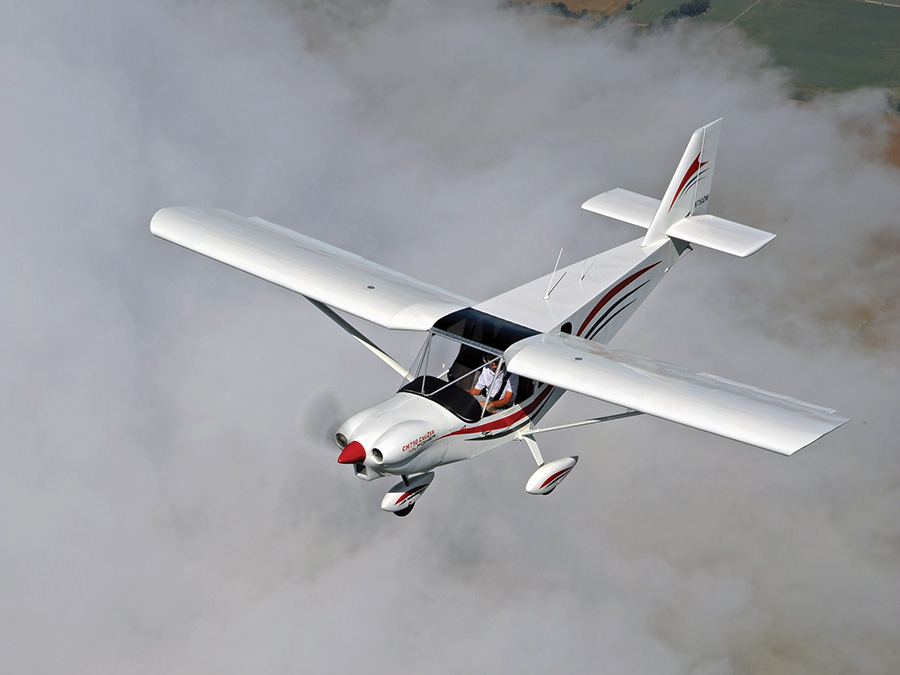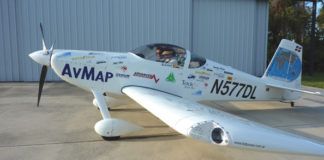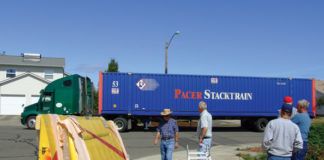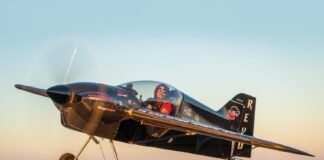I am always nervous when people tell me to “have a safe flight,” or we have a meeting where someone starts out by saying that “safety is our number one goal.” Frankly, we all need to admit that flying itself is not, and never will be, “safe.” The word “safe” to me means devoid of danger, with no risk to anyone or anything—and that simply can never be applied to an activity where we accelerate the human body to speeds far above a normal run, and lift it to a height from which a fall will be fatal. The same, of course, can be said about driving cars, riding motorcycles, or walking down a busy sidewalk with autos and trucks whizzing by your elbow. Life itself is not safe—but it does present varying levels of risk each day.
Risk management is the art of identifying hazardous situations, determining possible ways to mitigate or eliminate the risks where we can, and then accepting the remaining risk—or rejecting participating in the activity if those remaining risks are unacceptable. The key to understanding risk acceptance is that not everyone shares the same level of risk they are willing to accept. As we watch films of people jumping off cliffs on bicycles, skis, and snowboards, we come to realize that there are those who have never experienced the pain that comes with an “epic fail,” while others seem, to us, to be so risk averse that they can’t possibly be enjoying life. We all find ourselves somewhere along the risk continuum—and that is just fine—so long as we have the choice to accept or reject activities based on sound risk management. We should always remember that while we might have long accepted a certain risk (like flying an Experimental aircraft) for ourselves, the same cannot always be said for a new passenger or someone just getting into the field. They need to be informed and educated to the point where they can make a meaningful decision about the risk for themselves.
Identifying the risks in a particular activity, such as flying, is an important first step in managing those risks. In my experience, risk identification is not something done best by an individual; a group or series of individuals is usually better at brainstorming a list of potential risks. Identifying the risks is a creative activity, and a variety of minds will most often do a better job than an individual. You can find a series of minds—a brain trust if you will—among your aviation friends, through EAA programs such as Flight Advisors or Tech Counselors, and on the Internet. Become well-read about aviation mishaps yourself—what things bring people to grief? Experience truly is a great teacher when it comes to identifying risk, so find those with the most experience and pick their brains.
Approach risk statistics with caution. Statistics are good for identifying risks and giving you an idea of their likelihood, but they can often be misleading. Many aviation mishaps are never reported—on-airport forced landings, for instance, or engine hiccups that end well. I know of airplanes that have ripped their gear off in a bad landing at a quiet, out of the way airport and were carted away to a hangar so that no one in officialdom was the wiser. So we can use statistics to identify the risks, but they don’t always give us a measure of the frequency of that risk. Statistics also don’t help us with the most important part of risk management—they don’t tell us how to avoid (or mitigate) the risk.
So while it is helpful to know that a large number of homebuilt accidents are caused by pilot mis-control, it is more important to understand ways to avoid that mis-control. Transition training in type is a big one, and knowing how to react in distracting situations (like a sputtering engine) so that we keep flying the plane is another. Risk mitigation is the process of assigning ways to keep a risk from becoming serious, and that can require additional brainstorming on the part of a pilot and their group. Some risks are mitigated by redundancy, others by proper maintenance and assembly (and inspection). Some are handled by the proper equipment and others by good training—but what about the rest?
Once we have identified the risks and come up with mitigation techniques for those we can, we are left with those we cannot control. There are risks we simply have to accept. And at this point, it is important to recognize that a risk that has an extremely remote chance of becoming a factor is more acceptable than one which is much more likely to happen. It doesn’t take a lot of expertise to make a plot of risk severity versus probability, and if we are honest, it is easy to accept a low severity risk that might happen, and even a high severity risk that is highly unlikely. But a high severity risk that is likely to occur? No—I’ll leave that for people we call daredevils.
Each flight requires at least a quick risk assessment—no two have the exact same risk. In modern military aviation, a formal risk assessment is required before each mission, and some missions are rejected. Keeping the risks that we accept in the forefront of our minds helps us to be cognizant of those things we need to watch and be ready for. Being prepared is not just a good motto for the Boy Scouts—it serves those who engage in Experimental aviation just as well.
Preparing for AirVenture
This year, as I pack my cameras, computers and notebooks, I’m also going to throw in something else—a set of shop gloves. As you’ll read in this issue’s article, “One Week Wonder,” there is going to be an airplane built in Oshkosh this month. In fact, it will be built in one week by those attending the show. I can’t think of a better way to show the entire general aviation community—and those spectators not in the community (yet) who are just curious what this aviation bug is all about—that we homebuilders mean business about the “E” in EAA. If you’re like me, being away from the shop for over a week is hard, so having the chance to pull some rivets while at the show is going to be irresistible. I hope to see you in the tent with the Zenith under construction; I’ll be pulling rivets—or doing whatever else they need.

![]()
Paul Dye retired as a lead flight director for NASA’s Human Space Flight program, with 40 years of aerospace experience on everything from Cubs to the space shuttle. An avid homebuilder, he began flying and working on airplanes as a teen and has experience with a wide range of construction techniques and materials. He currently flies an RV-8 that he built in 2005 and an RV-3 that he recently completed with his pilot wife. A commercially licensed pilot, he has logged over 4500 hours in many different types of aircraft. When not writing on aviation topics, he consults and collaborates in aerospace operations and flight testing projects.





